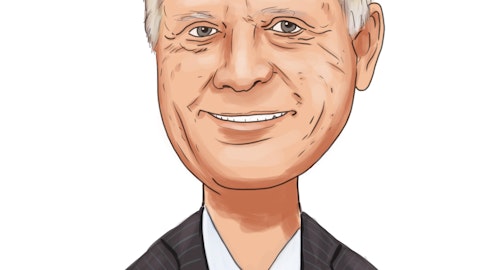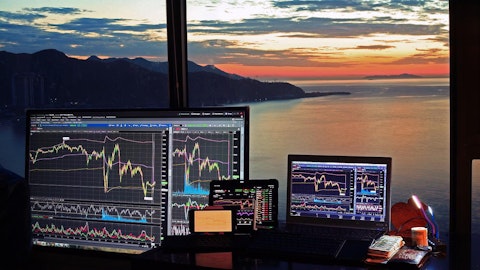These constrained supply conditions have pressured purchase costs for raw materials, leading to margin compression. As the charts on this slide demonstrate US PMI has dropped below pre-COVID levels. The availability of end-of-life vehicles has also decreased as the average age of vehicles on the road has reached its highest level on record. Lower durable goods orders along with increased scrap collection costs have also contributed to tighter scrap flows. By focusing on what we can control, including customer service, technology and platform expansion, our nonferrous volumes increased by over 7% in fiscal 2023 and we were able to limit our ferrous sales volume decline to about 5%. And unlike previous periods with similar market conditions, we expect the long-term structural benefits related to decarbonization to provide further upside when the market strengthens.
Let’s turn now to slide 8 to review market prices in more detail. As the chart in the upper left corner of this slide indicates, ferrous export prices softened during the quarter due to slowing global economy and corresponding weaker global steel demand. Chinese steel exports have also increased meaningfully over the last 12 months as their domestic demand especially for construction activities has fallen. Chinese exports have reached their highest levels since fiscal 2016 and are leading to slower global steel production ex-China. In the US, ferrous market prices fell by 15% during the quarter as steel mill utilization rates fell and uncertainty regarding the UAW strike has led to some destocking. Turning to nonferrous. As the chart in the top right corner of this slide shows during Q4 base metal prices were mixed with copper improving due to low global inventories and aluminum falling on weaker Chinese domestic demand and lower energy prices.
Turning to finished steel. While we are seeing a bit of softening due to the level of interest rates and tighter credit conditions, we expect to see increased activity in 2024 and beyond related to the US infrastructure build. While activity supported by these bills has been very limited thus far. Data tracking shows that the pipeline of projects in the pre-design and design phases is growing. Our Oregon steel mill with its range of low carbon long products is very well-positioned to meet this expected demand. For example, last month Oregon passed a bill requiring the Oregon Departments of Transportation and Administrative Services to prioritize domestically manufactured iron and steel in public works and public improvement transportation and vertical construction projects.
The bill complements Oregon’s previously enacted by clean law aimed at procuring low-carbon construction materials like our net-zero carbon emission green steel products. Let’s turn now to Slide 9 to review the longer-term outlook for recycled metals. As we have emphasized during previous earnings calls, decarbonization is a powerful driver of demand for recycled metals, which require less carbon to produce than mine metals. As you can see from the chart in the top left corner of this slide, many low carbon technologies are widely acknowledged to be more metal intensive than the technologies they are replacing. As a result, the long-term demand for recycled metals remains very positive and is further supported by the anticipated structural deficits for metals such as copper and nickel and the increased demand for manufacturers to maximize their use of recycled materials and reduce the environmental impact of their activities.
And as you can see in the two charts on the bottom of this slide, the use of ferrous scrap in the steelmaking process is also expected to continue to grow in the coming years as electric arc furnace steelmaking capacity, which uses scrap, ferrous scrap as its primary raw material has been expanding and is projected to increase further. Let’s turn now to Slide 10 for an update on our strategic priorities. In an economic environment characterized by market volatility and inflationary pressures, we continue to be focused on managing the things within our control. Our strategic priorities are directly aligned with the long-term trends of decarbonization and the corresponding need for more recycled metals and can be summarized as follows. First, technology investments in advanced metal recovery systems that our major recycling operation, as Stefano will describe in more detail 11 of the 13 new systems are now operational or in commissioning.




